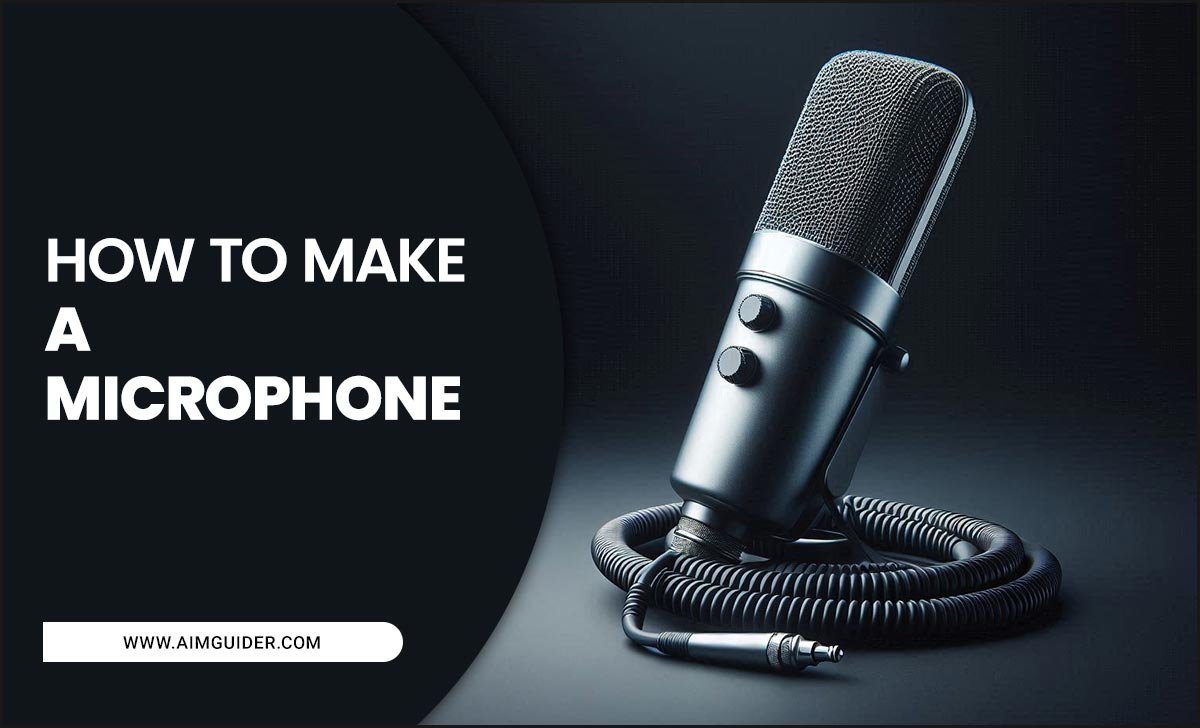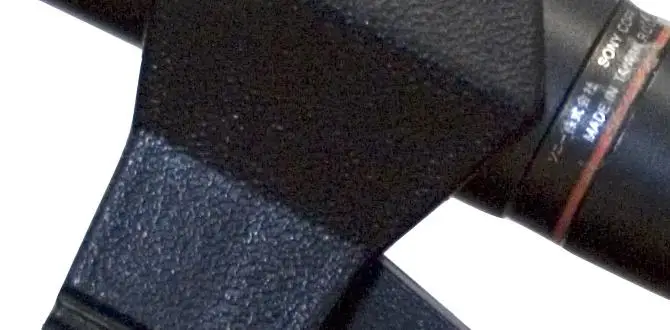Quick Summary:
Mounting your budget 4K TV in 2025 is easier than you think! This guide covers everything from choosing the right mount to safely securing your TV. Get a professional look and save space without breaking the bank. We’ll walk you through it step-by-step.
Hey there, fellow home entertainment enthusiasts! Bob E Riley here. So, you’ve snagged a fantastic budget 4K TV for 2025, and now it’s time to get it up on the wall. It’s a super common upgrade, but honestly, the thought of drilling into your walls can feel a little daunting, right? Don’t worry! Mounting a TV is totally achievable, even if you’re new to DIY. We’re going to break down exactly what you need to do, from picking the perfect spot to making sure your awesome new screen is securely in place. Ready to transform your living space?
Why Mount Your Budget 4K TV?
Mounting your new TV offers a bunch of cool benefits that go beyond just looking sleek. For starters, it clears up precious space in your room. No more bulky entertainment stands taking up floor space! Plus, it can drastically improve your viewing angle, making movie nights or gaming sessions way more immersive. Think about it: your TV is perfectly positioned at eye level, just like at the cinema.
Safety is another big win. A properly mounted TV is less likely to be knocked over by pets or kids, which is a huge relief for many families. And let’s be honest, a wall-mounted TV just screams “upgrade” to your home theater setup. It gives your room a clean, modern, and professional look that you’ll be proud to show off.
Choosing the Right TV Mount: What You Need to Know
Picking the right mount is the most crucial step. There are a few main types, and understanding them will help you make the best choice for your space and your TV.
Types of TV Mounts
- Fixed Mounts: These are the simplest and most affordable. They hold your TV flat against the wall, much like a picture frame. They offer a clean look and are great if you have a perfect viewing spot directly in front of the TV.
- Tilting Mounts: These mounts allow you to tilt your TV up or down. This is super handy if you need to mount your TV higher up on the wall (like above a fireplace) to reduce glare or improve the viewing angle from your couch.
- Full-Motion (Articulating) Mounts: These are the most versatile. They let you swivel, tilt, and extend your TV away from the wall. This is ideal for rooms where you watch TV from different angles or want to pull the TV out to access cables easily. They tend to be a bit more expensive but offer the most flexibility.
Key Features to Consider
When you’re looking at mounts, keep these things in mind:
- VESA Compatibility: This is super important! VESA refers to the standard spacing of the mounting holes on the back of your TV. Your TV mount must match your TV’s VESA pattern. You can usually find this in your TV’s user manual or by measuring the distance between the holes (e.g., 200x200mm or 400x400mm). Most budget 4K TVs will have VESA patterns listed. Don’t guess this – it’s the key to a secure fit!
- Weight Capacity: Ensure the mount can safely hold the weight of your TV. Your TV’s manual or the manufacturer’s website will list its weight. Always pick a mount rated for a bit more than your TV’s weight for an extra margin of safety.
- Size Compatibility: Mounts are generally rated for a range of TV screen sizes (e.g., 32-65 inches). While VESA compatibility is the precise fit, the general size range ensures the mount’s arms or plate can accommodate your specific TV dimensions.
- Wall Type: Where are you mounting it? Most mounts are designed for standard wood stud walls. If you have concrete, brick, or metal stud walls, you’ll need a specific mount or anchors designed for that material. Mounting onto drywall alone without hitting a stud is a big no-no and unsafe.
For budget 4K TV owners looking for the best value, a reliable tilting mount often hits the sweet spot between functionality and price. They offer a great viewing angle and are generally easy to install.
Tools and Materials You’ll Need
Gathering your tools before you start makes the whole process smoother. Here’s a checklist of what you’ll likely need:
- Your chosen TV mount kit (it should include most screws, bolts, and washers)
- A reliable stud finder (essential for wall mounting!)
- A pencil for marking
- A drill with various drill bits (including a pilot hole bit and a bit appropriate for your lag bolts)
- A socket wrench set or adjustable wrench (for tightening lag bolts)
- A level (critical for ensuring your TV is straight)
- A tape measure
- A Philips head screwdriver
- Safety glasses (always protect your eyes!)
- A helping hand or two (especially for lifting the TV)
If you’re unsure about any of these tools, a quick trip to your local hardware store can help you get what you need. They often have helpful staff who can point you in the right direction.
Step-by-Step: How to Mount Your Budget 4K TV
Alright, let’s get this done! We’ll cover mounting on a standard wood stud wall, as this is the most common. Always follow the specific instructions that come with your TV mount, as they can vary.
Step 1: Locate the Wall Studs
This is arguably the MOST important step for a secure installation. Wall studs are the vertical wooden beams inside your walls that provide structural support. You need to anchor your TV mount directly into these studs.
- Use your stud finder. Electronic stud finders are the easiest for beginners.
- Calibrate it according to its instructions.
- Slide it horizontally across the wall where you plan to mount the TV.
- Mark the edges of each stud you find with your pencil. Most studs are 16 or 24 inches apart on center.
- Once you’ve marked the edges, find the center of the stud and make a clear mark. Double-check by finding a second stud to confirm spacing. The American Wood Council provides helpful wood framing information that can help you understand wall construction.
Step 2: Determine the TV Mounting Height and Position
Consider where you’ll be sitting. The general rule of thumb is to have the center of the screen at eye level when you’re seated. For a budget 4K TV, think about glare from windows or lights. A tilting mount can help with this.
- Sit on your couch or favorite chair and have someone hold your TV (or the mount’s template, if it has one) at different heights.
- Find the spot where the center of the screen feels comfortably at your eye level.
- Measure the distance from the floor to this ideal center point.
- Transfer this measurement to the wall, marking the center point where your TV will be.
- Crucially, ensure this position is aligned with the center of a wall stud you located in Step 1. If your ideal spot doesn’t hit a stud, you’ll need to adjust slightly to center it over one.
Step 3: Attach the Mounting Bracket to the Wall
This is where the drill and wrench come in.
- Hold the wall plate of your TV mount against the wall, centered on your stud mark at the desired height.
- Use your level to make sure the plate is perfectly horizontal.
- Mark the screw hole locations onto the wall, ensuring they are precisely over the center of the stud(s).
- Use your drill to create pilot holes for the lag bolts. The size of the pilot hole should be slightly smaller than the lag bolt itself – check your mount’s manual for precise recommendations.
- Align the wall plate with the pilot holes.
- Insert the lag bolts through the wall plate and into the studs. Do NOT overtighten initially.
- Tighten the lag bolts securely with your socket wrench or adjustable wrench until the plate is firmly against the wall. They should feel snug and stable. If you’re using anchors for brick or concrete, follow the anchor manufacturer’s instructions carefully after drilling the appropriate holes.
Step 4: Attach the Brackets to Your TV
Now, let’s get the TV ready.
- Carefully lay your TV face-down on a soft, clean surface like a blanket or carpet.
- Locate the VESA mounting holes on the back of your TV.
- Identify the correct screws, washers, and spacers from your mount’s hardware kit that match your TV’s VESA pattern and depth. It’s vital to use the right size screws to avoid damaging your TV. If screws are too long, they can poke through the screen; too short, and they won’t hold securely. Your mount kit usually provides multiple options.
- Attach the vertical brackets (or the TV plate, depending on your mount design) to the back of the TV using the correct screws and washers.
- Tighten them snugly with a screwdriver, but don’t force them.
Step 5: Hang the TV on the Wall Bracket
This is where that extra pair of hands is a lifesaver.
- With your helper, carefully lift the TV.
- Align the brackets on the back of the TV with the wall plate.
- Gently slide the TV onto the wall plate until it clicks or locks into place, according to your mount’s design. Some mounts have a simple hook-and-latch system, while others require screws to secure the TV to the bracket.
- Confirm the TV is securely seated. Give it a gentle tug to make sure it’s locked.
- If your mount has security screws or locking mechanisms, install them now to prevent the TV from being accidentally dislodged.
Step 6: Connect Cables and Test
Almost there!
- Connect your HDMI cables, power cord, and any other peripherals.
- Turn on your TV and perform a quick check. Ensure the picture looks good and all inputs are working.
- If you have a tilting or full-motion mount, test its range of motion to make sure it moves smoothly and holds its position.
Pros and Cons of Mounting a Budget 4K TV
Like any home improvement, there are trade-offs. Here’s a quick look:
| Pros | Cons |
|---|---|
| Space-saving: Frees up floor or surface space. | Requires drilling into walls; potential for error if not careful. |
| Improved viewing angles: Can be positioned perfectly. | Cable management can be tricky; may require extra accessories. |
| Enhanced aesthetics: Creates a clean, modern look. | Initial cost of the mount itself. |
| Increased safety: Reduces risk of tipping for homes with children/pets. | Relocation can be more complex than moving a TV on a stand. |
| Better for glare reduction (with tilting mounts). | Requires finding wall studs or suitable anchors, especially for drywall. |
For most people, especially those looking to maximize their viewing experience and clean up their living space, the pros of mounting a budget 4K TV heavily outweigh the cons. The key is careful planning and execution.
Troubleshooting Common Mounting Issues
Even with the best intentions, tiny hiccups can happen. Here are a few common ones and how to fix them:
- TV is not level: If your TV is slightly off-kilter, loosen the screws on the wall plate just enough to make micro-adjustments, then retighten. Some mounts also have leveling screws on the bracket itself.
- Can’t find studs: If your stud finder is acting up, you can try the old-fashioned method: gently tap on the wall. A hollow sound usually means no stud, while a solid sound suggests you’re hitting one. You can also carefully drill a very small exploratory hole (smaller than your lag bolt) within the intended mounting area. If you hit solid wood, you’ve found a stud! If you hit only drywall, you’ll need to search elsewhere or use appropriate heavy-duty drywall anchors if specifically permitted by the mount manufacturer for light TVs (though stud mounting is always preferred).
- Screws won’t go in: Ensure you’re drilling a pilot hole of the correct size. If it’s too small, the wood can split. If you’re hitting something unexpectedly (like a pipe or electrical wire – be cautious!), stop immediately and reassess. Consider consulting a professional if you’re unsure.
- Mount seems loose on the wall: Double-check that all lag bolts are fully tightened into the center of the studs. If you over-drilled the pilot holes, the bolts might not have enough bite. In such cases, you might need larger lag bolts or a different mounting strategy.
Remember, safety is paramount. If you’re ever in doubt, it’s always better to stop and seek advice from a professional installer or a knowledgeable DIY friend.
Frequently Asked Questions (FAQ)
Q1: How high should I mount my budget 4K TV?
The general rule is to mount the center of the TV at eye level when you are seated in your primary viewing position. Measure from the floor to your eye level while seated, and then find that spot on the wall.
Q2: What if I can’t find wall studs?
You must mount your TV into wall studs for safety and stability. If you cannot find them, consider relocating the mount to a different wall with studs, or consult a professional contractor to reinforce the wall. Do not rely solely on drywall anchors for large TVs.
Q3: Can I mount a TV on a brick or concrete wall?
Yes, but you will need a specific mount designed for masonry and appropriate masonry anchors (like Tapcons) instead of standard lag bolts. You’ll also need a masonry drill bit.
Q4: How do I know if the TV mount will fit my TV?
Check the VESA mounting hole pattern on the back of your TV and ensure it matches the specifications of the TV mount. Most mounts list the VESA patterns they support.
Q5: Is it safe to let me do this myself?
Yes, with careful planning, the right tools, and by following instructions precisely, most people can safely mount their TV. Always prioritize finding studs and ensuring the mount is secure. If you’re uncomfortable at any stage, consider hiring a professional.
Q6: How do I manage cables cleanly?
You can use a cable management kit, which includes ties or sleeves to bundle cables. For a cleaner look, consider in-wall cable management kits (ensure you know what’s behind the wall before cutting!) or decorative raceways that stick to the wall.
Conclusion
So there you have it! Mounting your new budget 4K TV in 2025 doesn’t have to be a headache. By understanding the different mount types, gathering your tools, and methodically following the steps – especially finding those studs – you can achieve a secure, professional-looking installation. It’s a fantastic way to enhance your home entertainment space, save room, and enjoy your stunning new display from the best possible angle. Take your time, measure twice, drill once, and enjoy that amazing 4K picture on your wall!







